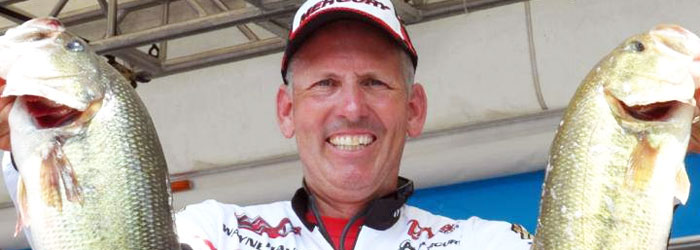How Water Level Changes Effect Bass

“Bass fisherman spend a majority of their time fishing on reservoirs.”
The water levels in these impoundments fluctuate based on area rainfall, power needs, and/or water needs. It is critical to monitor these changes in water levels and adjust your bass fishing locations based on these changes.
The following are facts in relation to water level changes:
- Falling water levels, regardless of time of year, will position bass deeper on cover or structure
- Rising water levels will move bass shallower on cover or structure
The first thing you need to do is identify which direction the water is moving, either falling or rising. The simplest way to do this is to put a marker (i.e. stick, rock, etc) at the water’s edge where you launch your boat. Each time you return to the ramp, you can quickly notice how the water level changed in relation to your marker. On most lakes you can check the water level before you leave the house.
Usually the company or government agency that manages the reservoir has a website which provides lake level changes. BassBite.com provides links to many of these sites.
Let’s look at how bass locations are affected by falling water levels on different types of cover/structure.
- In grass, bass will move to the outside edges and concentrate more on points and isolated patches.
- With bushes/willows, fish will move to the edges or completely out of them.
- On docks, bass will suspend under the deepest area of the dock.
- Points/drops, fish will pull out to the first break (sharp change in depth) at the depth they are accustomed to during that season.
- Creeks, bass will pull out to isolated cover in the middle of creek.
- Rocks, fish will suspend out in front of the deepest rocks available in the area.
The following is an example of how falling water levels will change bass locations:
It’s spring, the waters high, and you are catching bass one and a half foot deep in flooded buck bushes. The next week you put you boat in and notice the water has fallen 10-12 inches from the prior week. You go to your buck bushes and the bass are gone. What happened?
The water fell far enough to make the bass uncomfortable in the bushes and they moved.
Generally, they will move to the first cover available, that is at the same depth or slightly deeper, than the bass were holding at before the water started to fall.
Let’s go back to our example: If there were some lay down logs near the buck bushes, that are now in one and a half foot of water, that would be a prime spot to fish.
The bass will not usually swim completely out of the area when the water level falls, they will just move to a different type of cover that provides the same water depth they were using before the water started to fall.
Now, let’s look at how bass locations are affected by rising water levels on different types of cover/structure.
- In grass, bass will move to the inside edges and spread out more.
- Bushes/willows, fish will move to the center of the bush or willow.
- Docks, bass will move to the walkways and where dock connects to bank.
- Points/drops, fish will move up the point or off the drop, often scattering on nearby flat.
- Creeks, bass will move to the thickest bank related cover they can find.
- Rocks, fish will become more bottom oriented and move progressively shallower as the water level rises.
Let’s look at an example of the water levels rising:
Its fall, the waters low, and you are catching bass 3 feet deep on stumps midway back in creeks. The next week you put your boat in and notice the water has risen 10-12 inches from the prior week. You go to your stumps and the bass are gone. What happened?
The water rose far enough to provide the bass with better cover to ambush their prey and they moved.
Generally, they will move to the first cover available, that is at the same depth or slightly shallower, than the bass were holding at before the water started to rise.
Let’s again go back to our example: If there were some lay down trees further back in the creek that were in 3 feet of water, that would be a prime spot to fish.
The bass will not usually swim completely out of an area when the water level rises, they will just move to a different type of cover that provides shallower or the same water depth.
Here are a few other truths in regard to water level changes.
- Shallow water bass become spookier and less aggressive as the water level falls.
- Deep water bass become more concentrated and more aggressive as the water level falls.
- The inverse of the above two statements is also true.
- Shallow water bass become less spooky and more aggressive as the water level rises.
- Deep water bass become more scattered and less aggressive as the water level rises.
Understanding water level is important in helping an angler put the pieces of the bass fishing puzzle together to find and catch bass.
About Wayne Hauser
Wayne Hauser is a Touring Professional Bass Angler who is currently fishing on both the FLW Tour and in the BASS Opens. The 2013 season was his first year on the FLW Tour; he has fished the BASS Opens for two years. Wayne has a wealth of knowledge about bass behavior, techniques to catch bass, and how to do well in bass tournaments, which he will share with us in his articles. He is from and currently resides in North Carolina and is married with one son.
Wayne shares more of his experience in these articles



